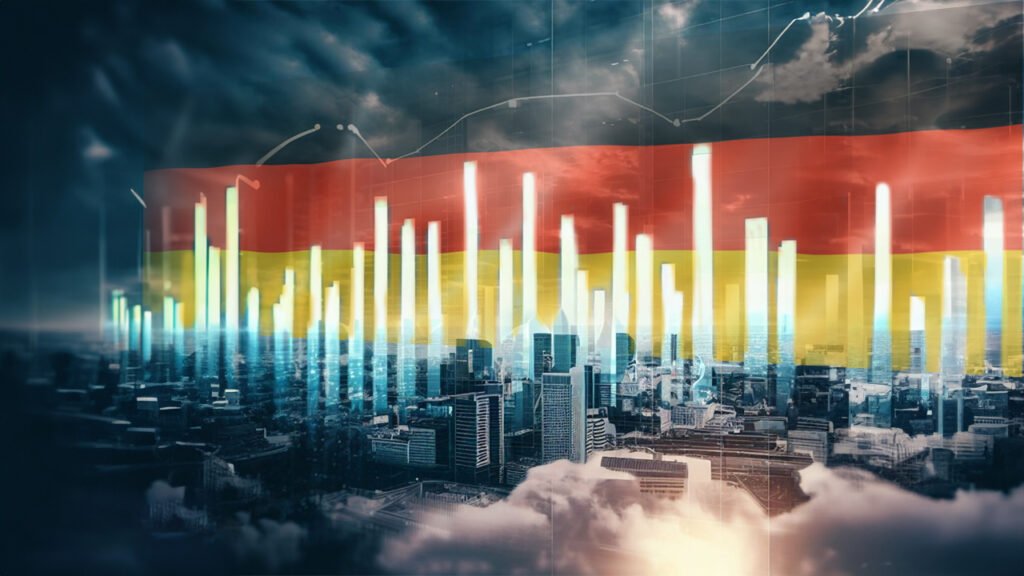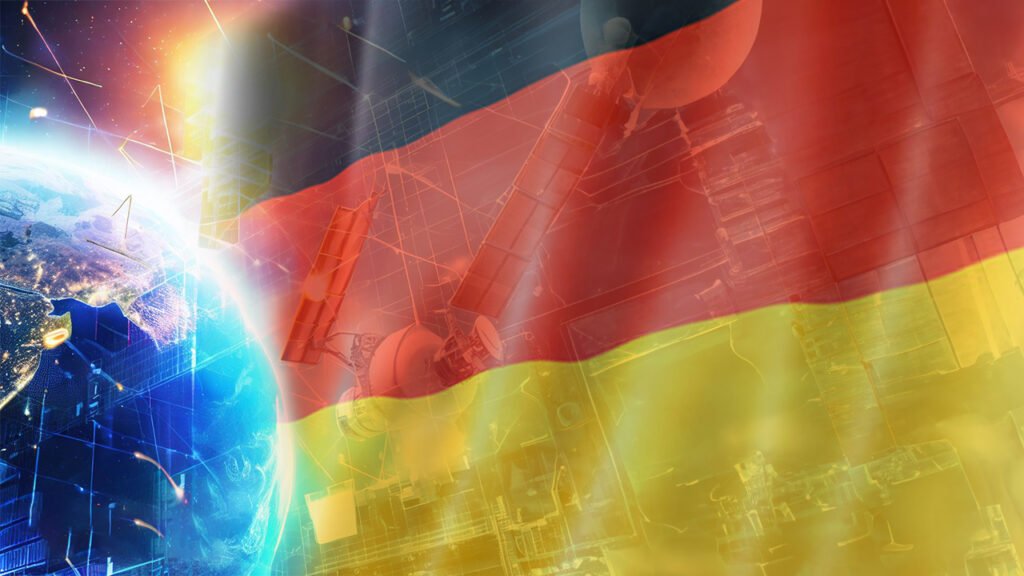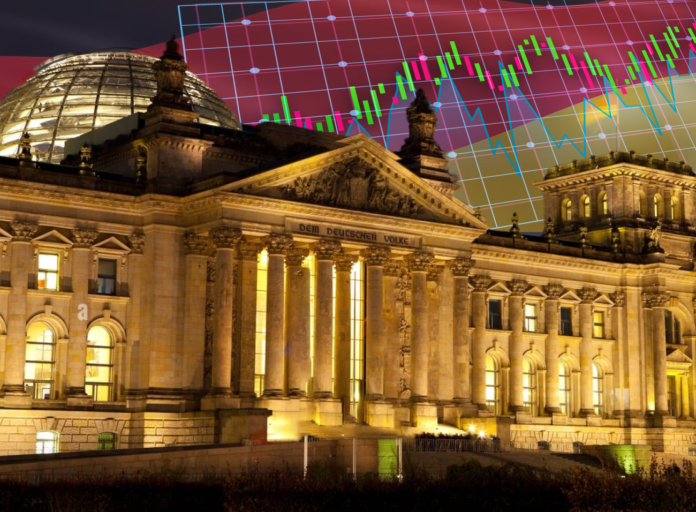Introduction:
Germany”s economy is renowned for its extensive and multifaceted structure, distinguished by its ability to adapt, innovate, and constantly evolve. Throughout recent decades, Germany has established robust economic connections with Central and Eastern Europe, assuming a crucial role in driving European prosperity. This article delves into the complexities of these economic interdependencies, providing valuable insights into the significant influence Central and Eastern Europe has on Germany”s economic landscape and its ongoing growth.
The Influence of Central and Eastern Europe on Germany’s Economic Dynamics
Over the past decades, the interwoven economic relationship between Germany and Central Europe has evolved into a cornerstone of European prosperity. As Popławski’s research on the role of Central Europe in the German economy highlights, the post-1989 era marked a seminal point in mutual economic cooperation, yielding dividends for both Germany and its Central European neighbors. This growth isn’t just centered around bilateral trade but also extends to multi-faceted integration, as Bussière’s paper underscores.
Evaluating the trade integration of Central and Eastern European countries, it’s evident that the region’s progress post-1994, marked by improved export performance and dampened domestic demand, has been instrumental in this integration narrative.
Diving deeper, one cannot miss the impact of foreign enterprises, especially German companies, on the economy of structure of Central and Eastern European (CEE) nations. As Krzywdzinski reveals, CEE countries are increasingly under the influence of foreign companies, with German firms leading the charge. This influence has not just been about economic capital but also extends to models of work and growth.
On the other hand, Germany’s export-driven economic model, which has been its pillar of strength in both European and international arenas over the past decade, is also undergoing introspection.
As certain sources suggest, there’s a growing realization in Berlin about the need for a new growth model, especially in the face of evolving dynamics with major players like China. This changing global landscape, coupled with Germany’s strategy to “de-risk” its ties with Beijing, underscores a pivotal juncture in its economic narrative.
As Central and Eastern Europe continues to evolve, its relationship with Germany is bound to shape the broader contours of Europe’s future economy. With increasing trade, investment diversification, and a shared growth vision, the interdependence between these regions promises a rich tapestry of opportunities and challenges in the years to come
Positive Indications in Business Sentiment for the German Economy
August has been a challenging month for the German economy, with various reports painting a somewhat somber picture. Yet, as we delve deeper into the data, it’s essential to maintain an analytical and holistic perspective, seeking out the potential silver linings amidst the concerns.
The IFO Business Climate Index, a reliable barometer for business sentiment in Germany, showed a downward trend for the fourth month in a row. The index fell to 85.7 in August from 87.4 in July, a decline that has caught the attention of many analysts and business leaders. The drop was more than expected and sentiment among German executives has darkened considerably. Such a prolonged decline in business sentiment may raise eyebrows, especially when it falls for several months in a row.
The data shows that the optimism of the German business and economy community is declining, reflecting a series of challenges and uncertainties..
Yet, it’s worth noting that sentiment, while a useful indicator, isn’t the only measure of an economy’s health. The German economy has shown resilience in the past, and even amidst these declining figures, there could be underlying strengths or opportunities not immediately apparent. For instance, the Ministry for Economic Affairs and Climate Action mentioned that the German economy was in a “difficult environment” in the early summer of 2023. However, there were also reports that sentiment among business executives in Germany had improved at some points.
This suggests a potential ebb and flow, a natural part of any economic cycle. While the immediate outlook might seem challenging, the larger trajectory of the German economy still holds promise, and it will be intriguing to see how businesses adapt and innovate in response to these shifts in sentiment.
In times of economic uncertainty, adaptability becomes a key asset for businesses operating in Germany. As they navigate the evolving landscape, many German companies have demonstrated a remarkable ability to pivot, diversify, and explore new avenues of growth. The recent challenges in business sentiment serve as a catalyst for innovation and resilience. They prompt organizations to reevaluate their strategies, embrace digital transformation, and explore international markets.
Germany’s renowned engineering and technological expertise continue to be sought after globally, opening doors for new opportunities. While the present may be clouded with uncertainty, the legacy of German innovation and the spirit of entrepreneurship remain powerful forces that can illuminate the path to future economic prosperity.

The Economic Recovery Post-Recessions
The German economy, often regarded as the powerhouse of Europe, this economy presents a mosaic of resilience, innovation, and challenges. Throughout the years, it has showcased an impressive ability to recover from adversities, underpinned by its robust industrial base and forward-looking policies. Delving into its recent trajectory, we can identify both the bright spots and the areas of concern.
The International Monetary Fund (IMF) has, in the past, highlighted Germany’s commendable economic performance, expecting a growth rate of 3 percent in a particular year, following a 3½ percent expansion previously. This strength is a testament to Germany’s economy and adaptability. Another encouraging aspect has been the nation’s commitment to sustainable growth.
As outlined by the European Commission, Germany has been actively implementing reforms to address potential bottlenecks while directing investments toward decarbonizing and digitizing all spheres of its society. This dual focus on sustainability and digital transformation positions Germany at the forefront of future-ready economies.
However, it’s not all sunshine and roses. The German economy experienced a technical recession in early 2023, characterized by two consecutive quarters of declining real activity. This economic setback was primarily attributed to a fall in exports, particularly impacting the capital goods industry. Despite this, Germany’s response mechanisms to economic challenges have historically been robust. For instance, post the global financial crisis, the country initiated measures to counteract the economic recession and stimulate sustainable growth.
Additionally, sectors like SAP Services hint at a potential transition from stagnation to growth by the end of this year. While challenges persist, Germany’s past and present strategies provide hope for a resilient future.
Amidst these challenges, it’s worth emphasizing that Germany’s resilience is deeply rooted in its commitment to continuous improvement. The nation’s ability to rebound from economic downturns is not solely reliant on its industrial might but also on its capacity for introspection and adaptation. The willingness to address weaknesses head-on and implement reforms underscores a culture of flexibility and forward thinking. This adaptability, combined with a strong tradition of research and development, positions Germany to harness the opportunities presented by emerging industries and technologies.
As it navigates the complexities of the global economy, Germany’s ability to learn from setbacks and innovate will undoubtedly play a pivotal role in shaping its economic trajectory.
Unemployment virus in the German economy: A Silver Lining in Disguise
The economic health of a nation often finds its reflection in its unemployment rate. With a lineage of data stretching from 1991-2023, Macrotrends illuminates the trajectory of Germany’s unemployment scene over these years. As history has shown, Germany has exhibited remarkable resilience, especially in recent times. While the global community faced economic shocks, Germany’s ability to maintain a steady unemployment rate showcases its robust economic mechanisms.
Delving deeper into the statistics, various sources, including Trading Economics and Statista, reveal some interesting insights. As of June 2023, the German unemployment rate stood firm at 3.00%, unchanged from May 2023. This consistency, despite global challenges, is commendable.
More encouragingly, the average unemployment rate in 2023 was pegged at 5.7%, indicating a general decline since 2005.
However, it’s worth noting that since 2019, there has been a slight uptick, largely attributed to the ramifications of the COVID-19 pandemic. Yet, even in the face of such adversity, Germany’s unemployment figures have remained relatively stable.
When contextualized globally, Germany’s figures are even more impressive. A report from the German Federal Statistical Office in June 2023 highlighted that Germany boasts one of the lowest unemployment rates within the EU-27. At a rate of 3.0% for the labor force aged between 15 to 74 years, Germany’s economic strength is evident.
Furthermore, data from YCharts underscores this optimism, stating that the current rate is significantly lower than the long-term average of 6.81%. As we navigate through these economic narratives, it becomes clear that Germany’s labor market, backed by its strategic policies and resilient economy, consistently finds its silver linings, even in the most challenging times.

The Eurozone Perspective
In the ever-evolving of economy landscape of Europe, the Eurozone has consistently presented a mix of challenges and opportunities. The recent data suggests that amidst the global economic fluctuations, the Eurozone is finding its footing and showing signs of resilience.
In the second quarter of 2023, the Eurozone witnessed a seasonally adjusted GDP increase of 0.3%. This growth, albeit modest, is a positive indication given that in the preceding quarter, the GDP had dipped by 0.1%. The stability of the GDP in the broader European Union, juxtaposed with the previous quarter’s slight downturn, signifies the region’s ability to rebound. Over the years, the Euro Area’s GDP Growth Rate has averaged 0.37 percent from 1995 to 2023, highlighting its steady economic performance.
It’s worth noting the historic high of 12.20 percent growth in the third quarter of 2020, which underscores the potential for robust recovery periods after downturns.
Furthermore, individual nations within the Eurozone have shown varied performances in economy. Austria, Belgium, and Cyprus have registered impressive GDP growth rates of 5.0%, 3.2%, and 5.6% respectively. On the other hand, Estonia experienced a decline of -1.3%. Such variations remind us of the diverse economic dynamics within the union. Inflation too has its story to tell, with the headline inflation in the euro area recorded at 5.3% in July, slightly down from 5.5% in June.
This decline, though minimal, suggests a stabilization of prices, which could potentially ease pressures on households and businesses.
Satellite Data and Economic Health
In recent times, the German economy has faced its fair share of challenges. As growth has decelerated, one could observe a corresponding ease in congestion within German port areas. This slowing momentum is a multifaceted issue. On one hand, German manufacturing has been struck by a combination of escalating factors, potentially connected to larger global trends. Simultaneously, the country’s foreign trade mirrors this downturn, as evident from the recent slump in exports by a significant 3.7 percent, even while imports remain relatively steady.
However, it’s essential to take a wider perspective, one that isn’t confined merely to Germany but looks at global trends and intricacies. For instance, the world over, supply chains have grappled with port congestion. By diving deep into a comprehensive dataset on maritime transport, researchers have gleaned some intriguing facts about the extent and distribution of port delays. Such insights can be invaluable in understanding the nuanced challenges faced by the German ports, and how they might compare to their international counterparts.
Moreover, geospatial data, encompassing satellite information, analog and digital maps, aerial shots, and street imagery, offers a bird’s eye view of the situation. The economic implications of such data can be profound, providing a clearer picture of how external factors might be impacting the German economic landscape.
Yet, beyond the numbers and the charts, there’s a human side to this. Congestion, whether in ports or on roads, has tangible effects on daily life. It can hamper public transport, reduce economic efficiency, and even have other societal repercussions. It’s a global concern, as traffic congestion, for instance, doesn’t just inconvenience drivers, it causes economic losses and a cascade of other issues. By understanding these layers, we can appreciate the resilience of the German economy, as it navigates these challenges, continuously searching for those silver linings.

Global Trade and Its Implications for Germany
In the ever-evolving global economic landscape, Germany’s position vis-à-vis China has recently been the subject of much discussion and analysis. Over the past two decades, Germany’s dominant stance in the trade of industrial goods has experienced a gradual decline, with its trade edge falling from a commanding 15 percentage points in 2000 to a modest 2.5 percent in recent times.
This shift is emblematic of China’s meteoric rise in the global market, managing to eclipse Germany’s economy position in certain sectors and regions. Yet, it’s crucial to view this not as a defeat, but as an opportunity for reflection and strategic recalibration.
As China continues to assert its economic might, Germany has taken proactive steps to redefine its relationship with the Asian giant. Recently, the German government unveiled a comprehensive strategy concerning China, acknowledging its role as both a pivotal trade partner and a formidable rival. This dual relationship is not without its complexities. On one hand, China’s prominent role in addressing global challenges, particularly in areas like climate change, makes it an indispensable ally.
On the other, Germany recognizes the potential perils of over-reliance on Chinese producers and consumers. As a result, there’s a growing sentiment in Berlin to diversify economic relations, moving towards democracies and partners that align more closely with Germany’s values and principles.
This strategic shift is not just reactive, but also indicative of Germany’s forward-thinking approach. While the nation’s first-ever China strategy has been a focal point for experts speculating about future Berlin-Beijing relations, it’s evident that Germany is seeking to strike a balance. By diversifying its economic partnerships and recalibrating its approach towards China, Germany aims to fortify its economy, ensuring resilience and adaptability in the face of global economic shifts.
As the German-Chinese economic narrative continues to unfold, one thing is clear: Germany is committed to navigating these complexities with pragmatism and a vision for the future.
In Conclusion: The German Economic Landscape
Germany’s economic tapestry is a testament to resilience, foresight, and adaptability. The intricate relationship between Germany and Central and Eastern Europe underscores the symbiotic nature of European prosperity. This multi-faceted integration serves as a linchpin for the continent’s future. Simultaneously, the German economy’s interactions with global powers, particularly China, highlight its pragmatic approach to both collaboration and competition.
While recent indicators like the IFO Business Climate Index and the challenges in port congestion paint a picture of momentary concern, the broader narrative remains one of strategic navigation through economic uncertainties. Germany’s unemployment statistics and its ability to bounce back from recessions offer a beacon of hope, emphasizing the nation’s capacity to find silver linings even amidst challenges.
In this ever-evolving landscape, it’s crucial to recognize that Germany’s resilience and adaptability are not solely defined by its economic strategies but also by its people. The German workforce has consistently demonstrated a commitment to innovation, efficiency, and high-quality craftsmanship, factors that contribute significantly to the nation’s economic prowess.
Moreover, Germany’s robust education and vocational training systems continue to produce a skilled labor force capable of meeting the challenges of a rapidly changing global economy. As the nation grapples with evolving dynamics and seeks new growth models, it can draw strength from the enduring spirit of innovation and excellence that has been at the core of its economic success. In essence, it’s the synergy of strategic policymaking and the dedication of its people that positions Germany for a future filled with promise and potential.



